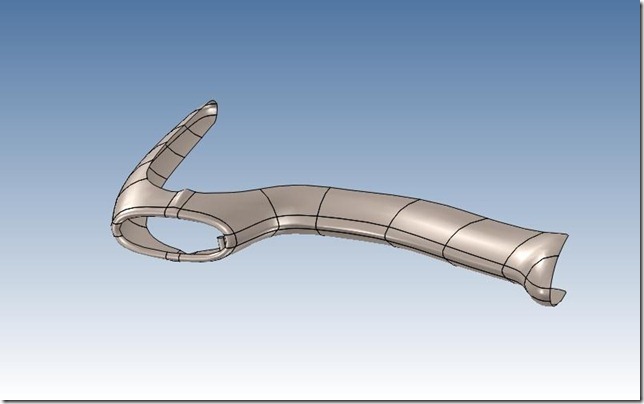We took on this 1959 Corvette bumper reverse engineering project. Using this particular method, the procedures involved in the original product don’t have to be known in order to analyze the end product, making this quite a convenient resource!
Here is the original scanned part. It was scanned and then modified to create usable surfaces.

As with most scans, they are not directly usable for the end product; they are used only as a guide to duplicate the part. Doug Graf, owner of Classic Reflection Coachworks, decided that it needed more clearance for the tail pipe because of the heat since it was to made of carbon fiber.
Halfway through the project, Doug wanted to see how it fit on the newly scanned body. It was a bit of a mismatch, so he decided that a new bumper was necessary. As you can see below, it’s not a very good fit. The original installation on a 1959 ‘Vette was reviewed as well and surprisingly, it wasn’t found to be much better.

Take a look at what the misaligned bumper evolved into in this image below. As you can see, the bumper now aligns with the body.

Frankly, the job was quite a challenge. Besides the increase in height, the outline of the shape had to be completely revised! This became a sculpturing job, and the program being used just couldn’t create the required tangencies. As you can see below, there are a number of flaws, that in the industry we call “Butt Cracks”. Again, this could simply not be corrected with the tools that were available.

Asking Amanda Koh to help out with these projects turned out to be the answer. As a Class A Digital Sculptor with more than 13 years in automotive and aviation design using Alias, perhaps she could shed some light on this issue.
As you can see below, we now have a perfect part.